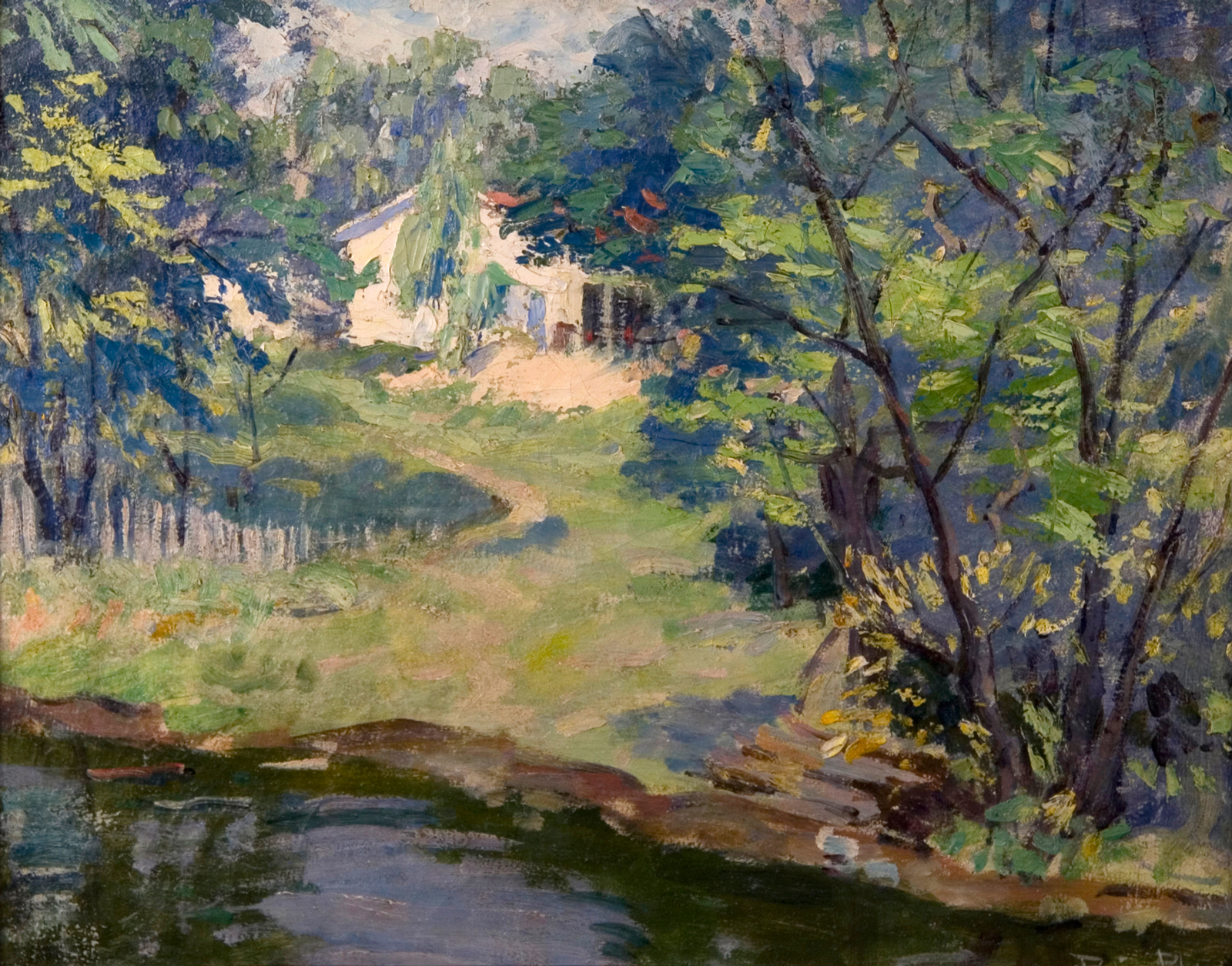Pauline Palmer
Dubbed “one of the leading woman painters in America” by the New York Times, Pauline Palmer (1867-1938) was an Impressionist best known for her skilled portraiture and loose, light-mottled landscapes. Following up a successful run showing her work at the Paris Salon between 1903 and 1911, Palmer jump-started her American career by sharing the opening date of her first solo show with the Chicago opening of the 1913 Armory Show, both of which were held at the Art Institute. Many local critics despised the modern art found at the Armory Show and encouraged the 188,650 visitors who would eventually make their way to the Art Institute to find respite in Palmer’s exhibition, cementing her place in Chicago’s artistic community.
Palmer was born Pauline Lennard in McHenry, Illinois. She attended the convent St. Mary’s Institute before moving to Chicago, where she worked as an art supervisor in public schools prior to gaining acceptance at the Art Institute of Chicago in 1893. She studied under William Merritt Chase and Frank Duveneck, then in 1900, like many artists at the time, traveled to Paris. She studied with Richard Miller there and spent at least one summer in Giverny alongside fellow Chicago artists like Karl A. Buehr and Lawton Parker. She toured Europe — Spain, Germany, England, and Italy — then returned to the United States to set up dual spaces at Tree Studios in Chicago and at a private studio in Provincetown, Massachusetts.
Palmer established herself as a forceful presence and proponent of traditional Impressionism in Chicago. She was elected president of the Chicago Society of Artists in 1919, the first woman to hold the post. She founded the Association of Chicago Painters and Sculptors in 1923 specifically to push back against the influx of more abstract art appearing in shows. The Art Institute of Chicago exhibited her work for nearly 27 years straight, starting in 1896, awarding her almost every prize available. And she served on juries for multiple Art Institute of Chicago shows and Women’s World’s Fairs, selecting and promoting the art of other female artists.
Through the 1920s and 30s, Palmer traveled less and less frequently — a 1938 trip to England and Scandinavia for artists led by Dudley Crafts Watson was one of the few international journeys she made. She embarked on the multi-week trip with her sister but caught pneumonia in Norway and died. The hole she left in the Chicago arts scene was felt immediately: four memorial exhibitions were mounted in her honor.
